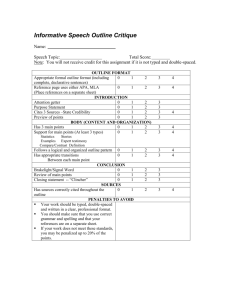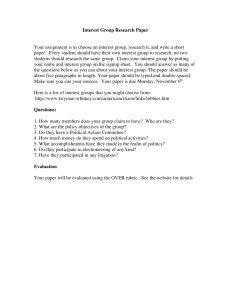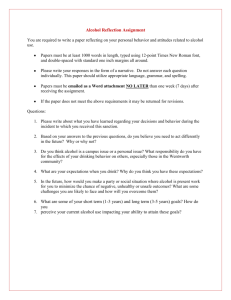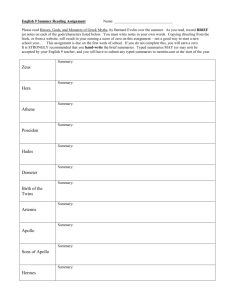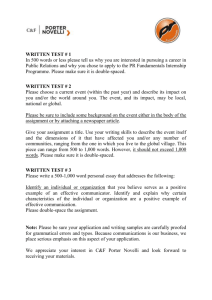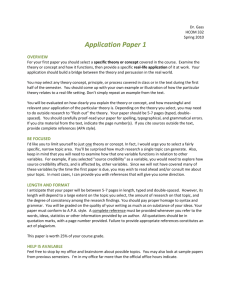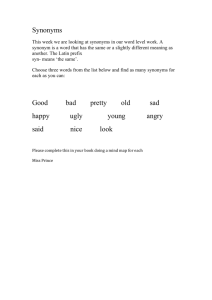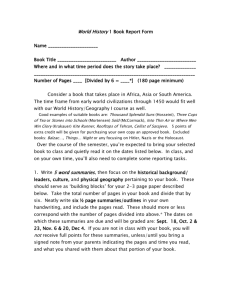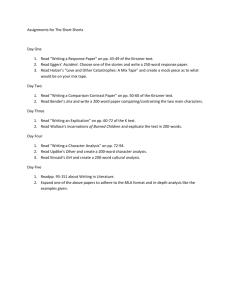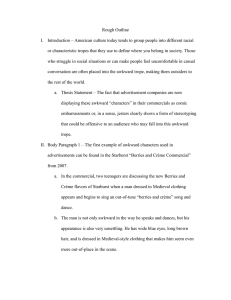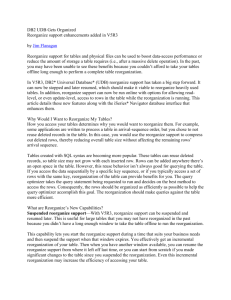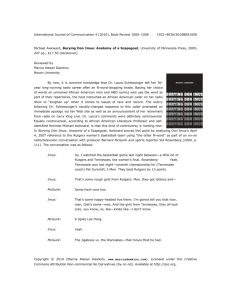Writing good summaries
advertisement
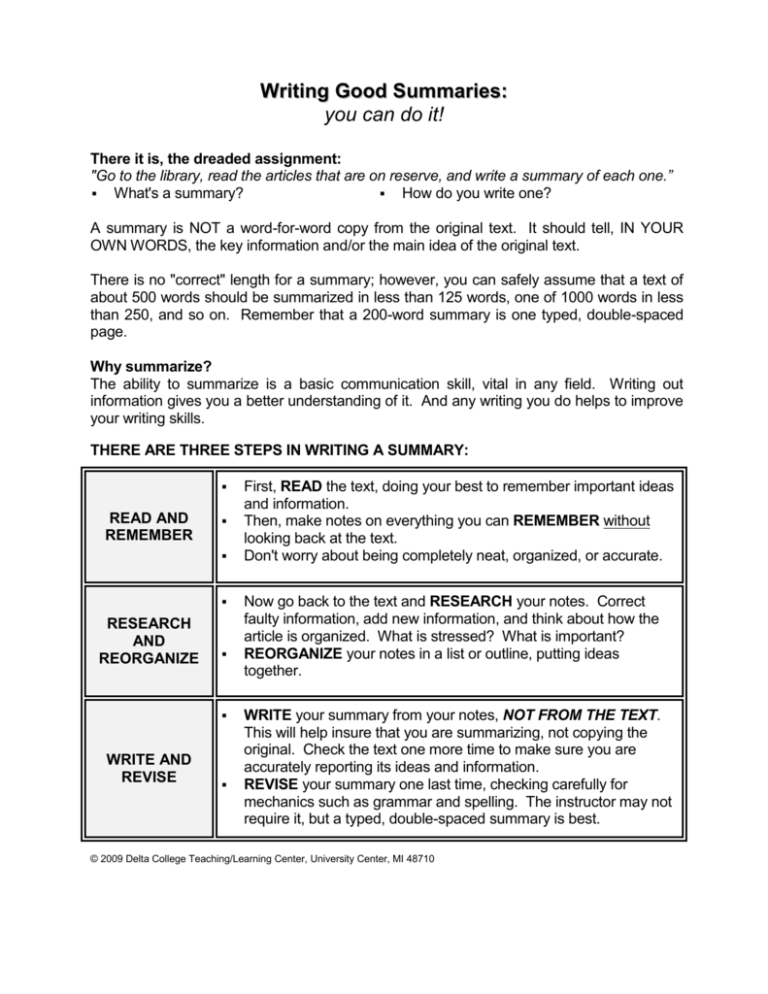
Writing Good Summaries: you can do it! There it is, the dreaded assignment: "Go to the library, read the articles that are on reserve, and write a summary of each one.” What's a summary? How do you write one? A summary is NOT a word-for-word copy from the original text. It should tell, IN YOUR OWN WORDS, the key information and/or the main idea of the original text. There is no "correct" length for a summary; however, you can safely assume that a text of about 500 words should be summarized in less than 125 words, one of 1000 words in less than 250, and so on. Remember that a 200-word summary is one typed, double-spaced page. Why summarize? The ability to summarize is a basic communication skill, vital in any field. Writing out information gives you a better understanding of it. And any writing you do helps to improve your writing skills. THERE ARE THREE STEPS IN WRITING A SUMMARY: READ AND REMEMBER RESEARCH AND REORGANIZE WRITE AND REVISE First, READ the text, doing your best to remember important ideas and information. Then, make notes on everything you can REMEMBER without looking back at the text. Don't worry about being completely neat, organized, or accurate. Now go back to the text and RESEARCH your notes. Correct faulty information, add new information, and think about how the article is organized. What is stressed? What is important? REORGANIZE your notes in a list or outline, putting ideas together. WRITE your summary from your notes, NOT FROM THE TEXT. This will help insure that you are summarizing, not copying the original. Check the text one more time to make sure you are accurately reporting its ideas and information. REVISE your summary one last time, checking carefully for mechanics such as grammar and spelling. The instructor may not require it, but a typed, double-spaced summary is best. © 2009 Delta College Teaching/Learning Center, University Center, MI 48710 GUIDELINES FOR WRITING A PARAPHRASE 1. Say what the source says, but no more. 2. Reproduce the source's order of ideas and emphases. 3. Use your own words and phrasing to restate the message. If certain synonyms are awkward, quote the material-- but resort to this very sparingly. 4. Read over your sentences to make sure they make sense and do not distort the source's meaning. 5. Expect your material to be as long as, and possibly longer than, the original. 6. Avoid plagiarism. 7. Write down all documentation facts so that you can document your source when you use it in your writing. GUIDELINES FOR WRITING A SUMMARY 1. Identify the main points 2. Condense the main points without losing the essence of the material. 3. Use your own words to condense the message. If certain synonyms are awkward, quote the words. 4. Keep your summary short. 5. Avoid plagiarism. 6. Write down all documentation facts so that you can document your source when you use it in your writing. 7. See other side for more tips on writing summaries. © 2009 Teaching/Learning Center, Delta College, University Center, MI 48710
